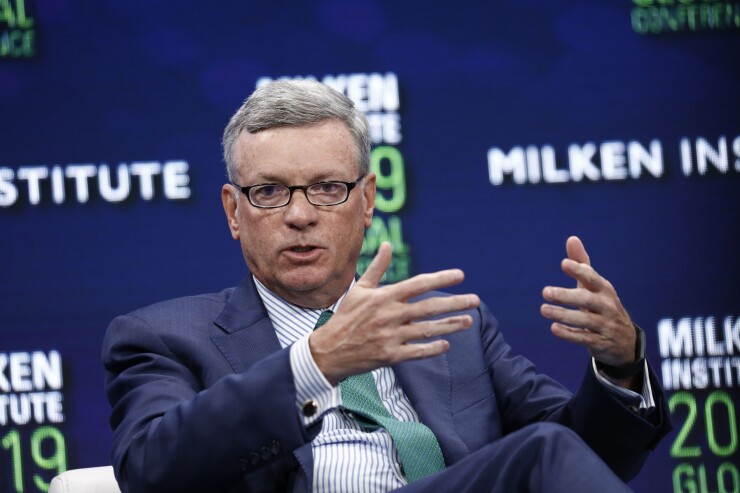As momentum in the buy now/pay later arena built over the last few years, Visa has been steadily amassing a group of partners supporting its Visa Installments Solution, which it’s developed through pilots in various global markets since 2019.
Visa is now preparing itself for the next and most important phase of the BNPL boom, Al Kelly, the card network's chairman and CEO, told investors during Tuesday’s earnings call.
“We believe we’re currently experiencing BNPL 1.0 with fintechs and companies cutting individual deals, merchant by merchant,” Kelly said, noting that installment loans currently represent only a fraction of the estimated $100 billion to $150 billion in total industry payment volume.
Visa plans to create bigger opportunities for installment lending in the next couple of years by becoming the primary connection point for financial institutions, fintechs and merchants to offer installment loans to the broadest spectrum of consumers, Kelly said.
Visa on Wednesday said its newest partners in the BNPL arena are FIS and the Canadian company Moneris. The card network has also expanded its relationship with Klarna to reach new global markets, Visa said.

“We’re bringing scale to the disruptors,” Kelly told analysts, adding that through Visa’s two-pronged approach, issuers can extend BNPL loans to existing credit card customers through bank portals while merchants can offer Visa Installments Solution at the point of sale.
Several banks and payment companies in the U.S., Canada, Malaysia and Russia support the platform. Visa's not alone in its strategy; other payment companies are also working as matchmakers between merchants and BNPL lenders. Just this week,
For the quarter ended Sept. 30, Visa reported net income of $3.6 billion, or $1.65 a share, up 71% from $2.1 billion, or 97 cents a share, a year earlier. Revenue rose 27% to $6.6 billion.
As a growing number of fintechs adopt virtual card payments, including to enable BNPL transactions for purchases and repayment of loans, Visa sees itself as having a role in helping them build scale.
Visa has also established partnerships with over 60 cryptocurrency players which all have the ability to issue Visa credentials, Kelly said. It recently became an investor in
Though open banking, which allows fintechs to build new services by tapping into bank data, is still in its formative stages in the U.S., Kelly said he doesn’t think it poses a significant threat to Visa’s payment volume.
“There are certainly transactions that will lend themselves to account-to-account, which we know is one of the things that people will think about as a threat,” he said. Visa will also support instant account payments through its pending acquisition of Tink, a European open-banking platform.
But even when open banking becomes more widely available in the U.S., many consumers will continue to use Visa’s card network for fraud protection, security and dispute resolution, Kelly said.
“When money is moved instantaneously, that’s nice at one level, but once it’s moved it’s awfully hard to get it back, and it [becomes] about other elements than just speed,” Kelly said.
Despite a slowdown in travel payment volume in the late summer related to a COVID-19 delta variant surge, Visa’s U.S. credit and debit card payment volume continued to rebound in the recent quarter, said Visa Chief Financial Officer Vasant Prabhu.
“There is pent-up demand for travel as bookings accelerate wherever borders are opened,” he said, noting that overall cross-border travel remains sluggish and Asia is still largely locked down.
“We are not back to normal yet globally,” Prabhu said.





